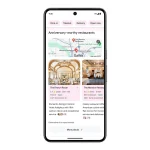Bridging the digital use, design, and access divides key to enhancing learning experiences and outcomes through technology. Recommendations for educators.
Realizing the full promise of education technology to engage students and boost outcomes depends on urgently addressing key “digital divides” limiting usage, training, and access according to the 2024 National Education Technology Plan.
Empowering Students and Teachers with Technology: A Vision for the Future
The recent release of the 2024 National Educational Technology Plan (NETP) outlines an inspiring and ambitious vision for realizing the potential of technology to transform teaching and learning in America’s schools. As we emerge from the pandemic with unprecedented funding dedicated to education, there is great optimism that longstanding barriers around equitable access, effective integration, and innovative design can finally be overcome.
An Evolving Plan to Meet Evolving Needs
The National Educational Technology Plan was first mandated by Congress in the early 1990s to survey the state of education technology and provide guidance to schools. Since then, it has been updated every five years as digital tools and the learning landscape continues to change dramatically. This latest 2024 plan from the U.S. Department of Education sets its sights on closing persistent digital divides in schools and building teacher capacity to unlock the promise of technology for all students.
“Technology has incredible potential to enhance instruction, increase engagement, and improve outcomes, but only if the proper infrastructure, training, and vision is place.”
With an unprecedented $270 billion in federal investments towards education connectivity, devices, and digital resources from recent initiatives like the American Rescue Plan and Bipartisan Infrastructure Law, resources to make the 2024 vision a reality are abundant. Closing divides is also a major priority for the Biden-Harris Administration. Now the work begins to effectively invest funds and align policies to ensure all students reap the benefits.
Understanding the Key Divides in Educational Technology
The 2024 NETP frames technological inequity in schools around three key divides that limit student opportunities and must be urgently addressed. These are the Digital Access, Design, and Use Divides.
Closing the Digital Access Divide
Over 15 million students in this country still lack adequate connectivity or access to devices, disproportionally impacting rural and low-income students. Compounding matters, discriminatory algorithms, inaccessible formats, and incomplete captioning erect unnecessary barriers for students with disabilities. Safety and data privacy risks also abound if students lack fundamental digital health and citizenship skills to navigate an increasingly digital world.
Closing the Digital Access Divide focuses on securing equitable access to devices, broadband connectivity, digital content and tools with special accommodations to meet all students’ unique needs. This includes accessible formats for students with disabilities and expanding target support around online safety, security, privacy and more.
Bridging the Digital Use Divide
While teachers have made heroic efforts to integrate technology with remote learning, usage is still not optimized to truly transform teaching and learning. Students using technology for passive content consumption rather than active, engaged learning with rich multimedia reduces technology’s potential. Students from marginalized backgrounds also have fewer opportunities to leverage technology to build skills in critical thinking, communication, collaboration, and creativity across diverse disciplines like computer science and media arts.
Bridging the Digital Use Divide means moving from technology for digitized worksheets and readings towards more dynamic applications for creativity, analysis, and experiential learning. This empowers students as producers and evaluators while giving them agency over meeting learning goals.
Closing the Digital Design Divide
The key to transforming technology usage in the classroom is teacher training and capacity. Yet lack of time, training, and support to design engaging technology-enabled experiences holds many educators back from deeper integration. Teachers still report low confidence levels around leveraging data, assistive tools, and leading virtual lessons effectively. Compounding matters, prevailing approaches to teacher training still emphasize passive learning rather than active practice.
Closing the Digital Design Divide means improving professional development for teachers so they gain fluency choosing and using technologies appropriate for instructional goals and student needs. Using active and social learning strategies for adult education can build self-efficacy and modeling the kinds of engaged learning expected for students. Expanding access to rich communities of practice where teachers collaboratively design lessons can facilitate this.
Key Stats on Digital Divides
- 15+ million lack home broadband
- 56% of teachers want more training
- Just 40% of students take computer science
- $270 billion in federal ed tech funding
“This 2024 plan can reframe technology’s role in schools if we use new investments wisely. Together, closing access, use, and design divides will unlock technology’s power for equity and instructional excellence.”
A Roadmap for States, Districts, and Schools
Transforming learning with technology is a complex but immensely rewarding challenge requiring coordinated action at the classroom, school, district and state levels. The updated NETP provides recommendations and case studies tailored for each.
Guidance for State-Level Leaders
- Conduct needs assessments analyzing connectivity infrastructure, distribution of devices, usage data, and stakeholder access across all districts. Look for gaps disproportionally impacting marginalized groups.
- Using deficiencies found, draft comprehensive state strategic plans addressing policy barriers around device distribution, security policies, acceptable use guidelines and accessibility policies.
- Develop processes for continuous community feedback around evolving needs or concerns about privacy, transparency, data security and algorithm audits.
- Design universally accessible digital content repositories enabling educators to assemble standards-aligned tools with automatic accommodations integrated.
Example State Success Story
Georgia’s Technology Infrastructure Readiness and Sustainability Framework aligns connectivity upgrades, device ratios, cybersecurity policies and teacher readiness standards. Annual Gap Analysis Visualization Application (GAVA) reports enable data-driven continuous improvement.
Guidance for District Technology Leaders
- Conduct personalized educator readiness evaluations rather than one-size-fits all surveys to tailor training and evaluate diverse skill gaps.
- Curate expert mentor and peer learning communities for educators to collaborate on lesson planning rather than reliance on passive lecture training.
- Promote student Digital Leadership programs for students assisting teachers with technology initiatives, building agency and skills.
- Develop district-level adaptable technology integration frameworks aligning tools to learning activities (research, collaboration, assessment etc.) rather than generalized lists.
Example District Success Story
Broward County Public Schools delivered over 200,000 devices and 100,000 hotspots with drive-through lending programs during COVID, conducting thousands of virtual educator training sessions enabled by Instructional Technology Facilitators and Digital Classrooms Specialists.
Guidance for School Leaders
- Conduct learning environment audits identifying physical configuration barriers (furniture, outlet placement etc.), accessibility gaps and dated devices limiting technology-enabled instruction.
- Implement school-level technology plans with teams of educators, technology coordinators, students and families continuously identifying needs and recognition opportunities.
- Provide stipends and substitutes enabling teachers to invest summer months towards professional learning and lesion study development rather than isolated workshop sessions.
- Showcase students using technology for computational thinking, creative media production and project-based learning in community events, not just adults presenting slide decks.
Example School Success Story
Casco Bay High School in Maine implemented student-led professional development for teachers where students identified learning needs and trained staff on emerging technologies and digital citizenship issues.
Key 2024 NETP Focus Areas
- Continuous gap analysis
- Building educator capacity
- Elevating student voice
- Customizing support and recognition
- Active professional learning
“With strong leadership and collaboration, this 2024 vision can produce phenomenal gains in innovation, engagement and outcomes, fundamentally transforming learning powered by technology.”
Conclusion
The potential for technology to enhance instruction, increase inclusion, and improve student outcomes is tremendous, but only if we can collectively overcome systemic barriers that disproportionately limit opportunities. The U.S. Department of Education’s forward-looking 2024 NETP provides guidance and investment to match the urgency and scale needed to truly modernize teaching and empower students, closing equity gaps along the way. This won’t be easy, but by working together, centering student voices, addressing heartbreaking human impacts of the pandemic, prioritizing active learning, and pushing towards the higher calling of public education to unlock human potential, we will get there. We owe it to this generation to ensure technology facilitates, not hinders, goals for knowledge, creativity, critical thinking, empathy and citizenry. Our nation’s future depends on this work.
To fully leverage education technology’s power, we need dedicated collaboration and investment towards equitable access, improved pedagogy and dynamic learning experiences benefitting all students.






